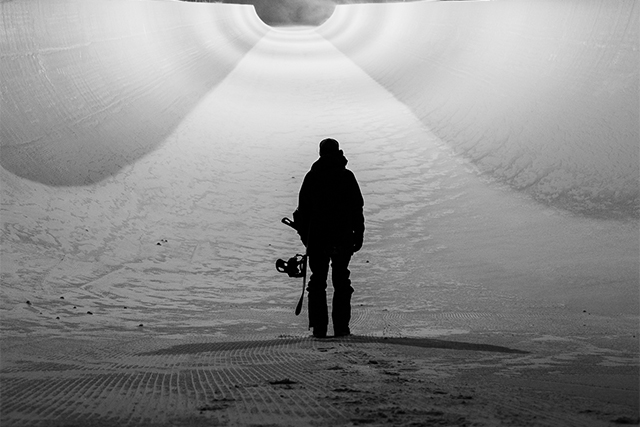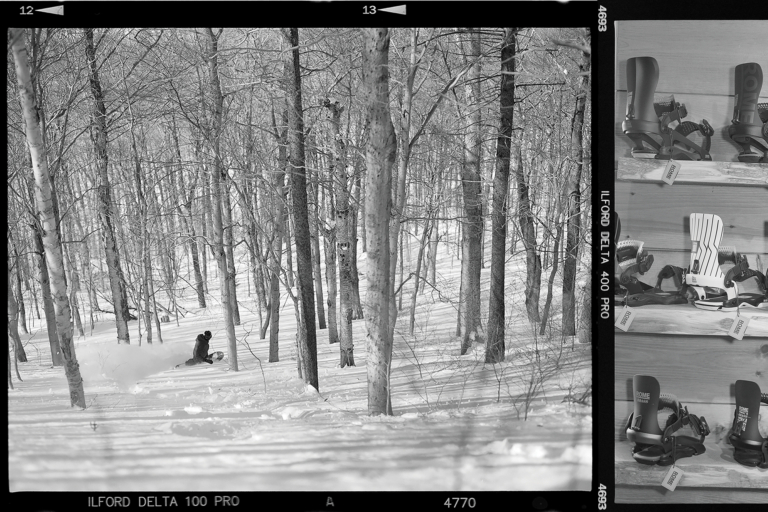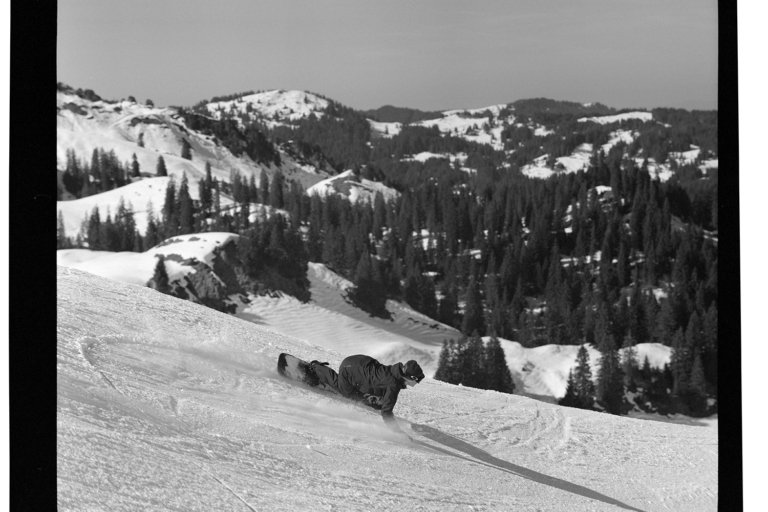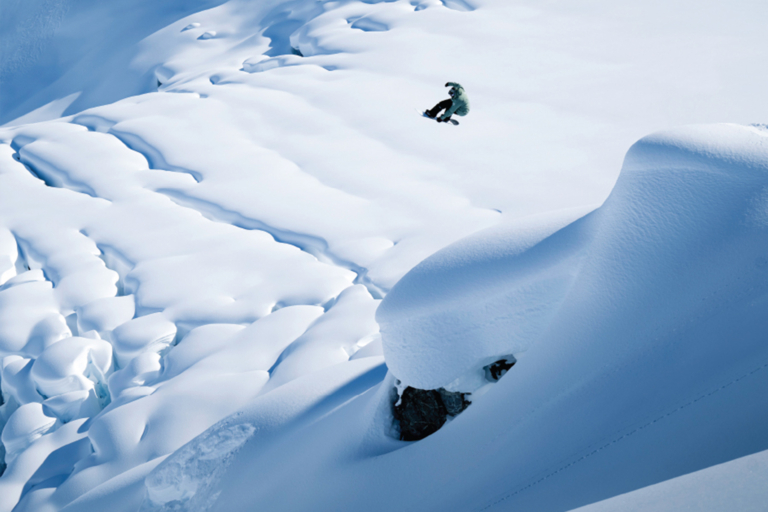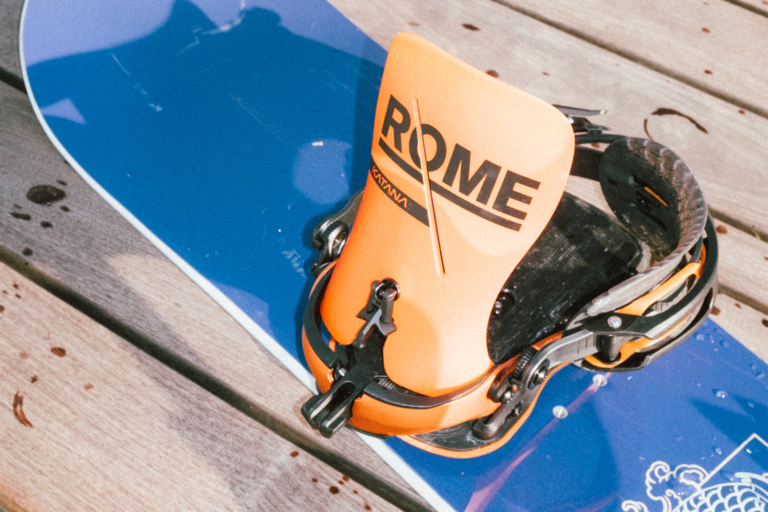Dangerous cliché question, but do girls depend way more on perfect conditions than men? Do we have something inside us that keeps us from killing ourselves while men are way more likely to send it on icy landings or without visibility?
Kelly: Women and men can do the same things but they get there in different ways. Our coach in the US team can tell Greg Bretz “go do this” and Greg is totally cool with it. He’ll tell me “Kelly, do this” and I’m like: Wait. How do I do it? And only as soon as I understand it, I’m going to do it.
Kjersti: Maybe that’s the biggest difference between men and women. Women are like “I have to think about that,” and men just do it. There’s even research from playgrounds, that girls think about consequences at a way younger age than boys.
Spencer: But honestly, the jump at Nine Queens wasn’t even that great! The most important thing was the landing, because even if something wasn’t perfect you were still able to land.
But what was so special at Nine Queens then?
Kjersti: It was very laid back. We were free to ride whenever we wanted and the plan was always adapted to the needs of the riders. They also had a heli, and somehow that really motivated the girls. Maybe even more than anything else!
Jamie Anderson’s frontside 1080 and Klaudia Medlová’s backside double rodeo 900 mute at Suzuki Nine Queens 2015
Spencer: It sounds really ridiculous but it did! The day the hardest tricks happened, I was so exhausted I almost didn’t ride, but when that helicopter showed up, I was like “lets do it!” [laughs]. I tried a couple of nines and almost wanted to give up, but then I saw Klaudia Medlova do the double back rodeo, and then I sent it again and landed it. That day Klaudia was getting the double back nine, I landed front nine, Jamie landed cab nine, switch back nine, cab ten,… it was an hour and a half session and literally every ten minutes somebody landed something new! And everybody was cheering for each other. I never thought I’d see our sport progress 10 years in an hour.
So when it comes down to what women’s snowboarding needs, it would be a bigger time frame, a good crew, a smooth landing and a mediocre jump? That’s it?
Kjersti: And a helicopter! [Laughs] Another thing about this event is, that you are really treated like a queen. Everything is so nice and thoughtful – the housing, the food, the media crew – that you feel great without even being in the snow.
So you need your asses kissed to perform well?
Kjersti: Yes! [Big laughs from all the girls.] No, but at other events, women are kind of a sideshow. At Nine Queens, it was all just there for us. The setup, the media, the focus is just on you and that really helps your confidence.
Spencer: A lot of good things came together in a very symbiotic way. After the first day I even told Anna Gasser that the jump was alright, but that I didn’t think anybody would learn anything new on it.
But how are we going to be able to recreate this magic again?
Spencer: I think it was a door opener for every girl there, seeing that many women progress so much in such a short period of time. It’s like what Kelly said about the four-minute mile: you realize that it is possible, and that makes it possible.
Kelly: But to add another fact: the first four-minute mile was run by a man in 1954 – and still no woman has done it until today. So why are we pigeon holing female snowboarders?
Spencer: Action sports are a new breed of sport. And we are on a very similar platform to men. We ride the same slopestyle courses, we ride the same halfpipes. So in a way, our level is expected to be the same. If you look at any other sport: Women play shorter tennis matches, they play softball not baseball,… because women aren’t strong enough, women have different bodies, but that’s not really there in snowboarding. Our sport runs on gravity and there’s twelve year old boys that can do triple corks. It’s not so much muscular and build, it’s so much more mental. And it’s not that we’re never going to get there, but it’s like Kelly said: we’ll get there in a different way and it might not be as quick. So on the one hand, performing on the same platform brings us more criticism, but at the same time: women are riding the same parks, women are doing tens! We are doing doubles! It’s sick! And I think it should be celebrated, not criticized.

Do you think this recent progression will make the gap between the top female athletes and the bigger field smaller? We’ve all been at contests where the top five girls seemed to compete on a completely different level than the rest.
Spencer: Absolutely! [To Klaudia]: What do you think is your potential? For me, coming up, I always wanted to do a ten. But now I think, maybe I can do a twelve, or maybe a double cork. You always put a roof on yourself. So what’s yours?
Klaudia [who has been sitting next to the group quietly the whole time, now answering very shy and with the most charming Slovakian accent]: Right now I’m thinking about tens and double corks. No triples. Yet.
Kjersti: Can you imagine doing a triple later?
Klaudia: I tried to visualize it, but I don’t see it yet. At Nine Queens, I was thinking about doing a cab double next. When I tried it before, I always over rotated, but now, I think the cab double could be doable.
Spencer: When I was where she is now, I put my ceiling at the 900. So obviously the sport has progressed so much within the time that I’ve been in it. No matter how far me, Kjersti, Kelly or Jamie can take it, it’s going to get taken over by people like Klaudia, Anna Gasser and Miyabi Onitsuka. So I don’t question the future progression in women’s snowboarding at all.
Word.
And as a side note: Klaudia Medlova does not have a single paying sponsor from the snowboard industry – same thing with Anna Gasser, who didn’t get picket up until after she did a cab double. Why? Maybe this could be a question to be discussed in the future instead…
Watch also: Katie Ormerod stomps first female backside double cork 1080
